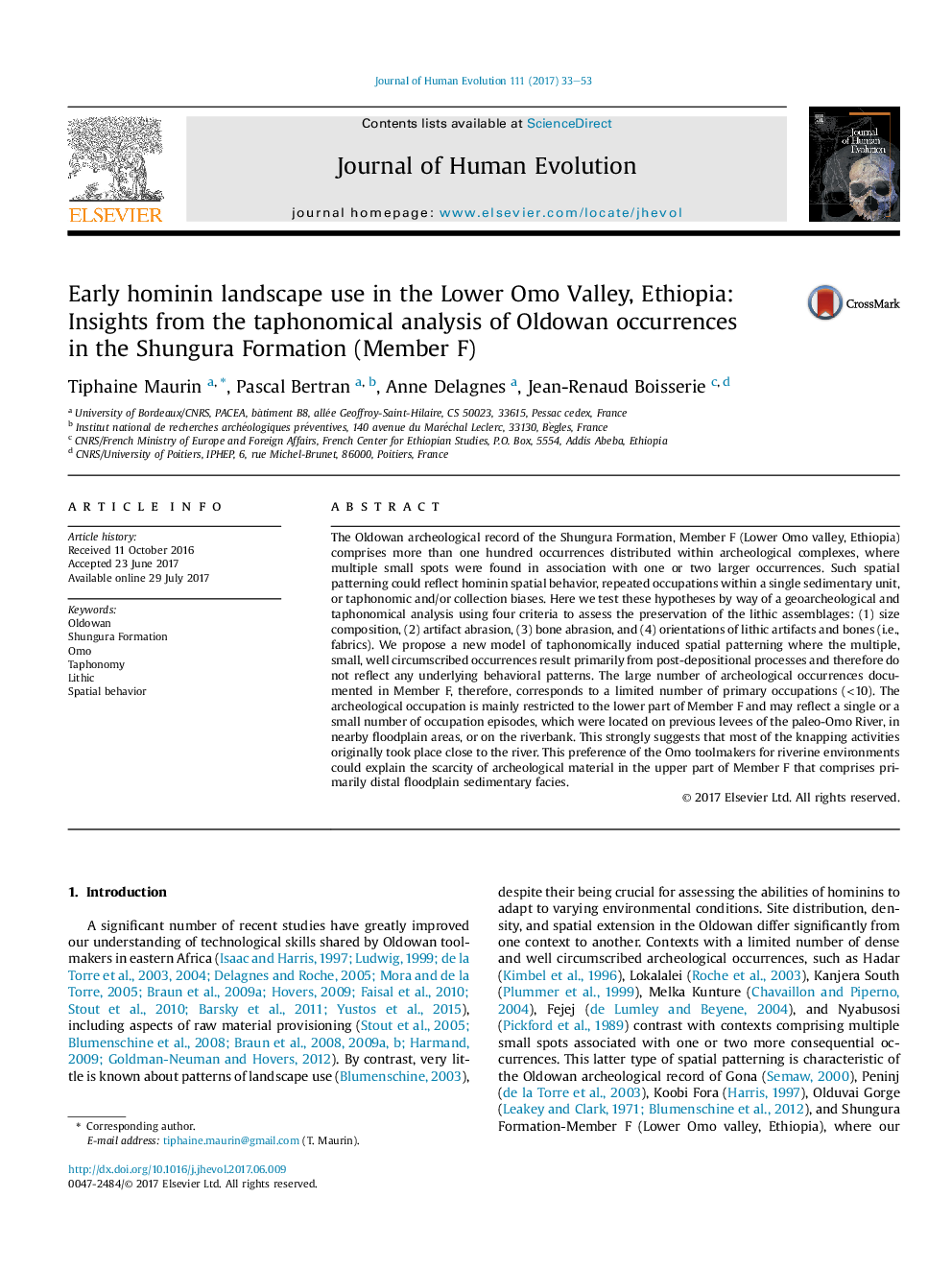| کد مقاله | کد نشریه | سال انتشار | مقاله انگلیسی | نسخه تمام متن |
|---|---|---|---|---|
| 5766779 | 1628138 | 2017 | 21 صفحه PDF | دانلود رایگان |

The Oldowan archeological record of the Shungura Formation, Member F (Lower Omo valley, Ethiopia) comprises more than one hundred occurrences distributed within archeological complexes, where multiple small spots were found in association with one or two larger occurrences. Such spatial patterning could reflect hominin spatial behavior, repeated occupations within a single sedimentary unit, or taphonomic and/or collection biases. Here we test these hypotheses by way of a geoarcheological and taphonomical analysis using four criteria to assess the preservation of the lithic assemblages: (1) size composition, (2) artifact abrasion, (3) bone abrasion, and (4) orientations of lithic artifacts and bones (i.e., fabrics). We propose a new model of taphonomically induced spatial patterning where the multiple, small, well circumscribed occurrences result primarily from post-depositional processes and therefore do not reflect any underlying behavioral patterns. The large number of archeological occurrences documented in Member F, therefore, corresponds to a limited number of primary occupations (<10). The archeological occupation is mainly restricted to the lower part of Member F and may reflect a single or a small number of occupation episodes, which were located on previous levees of the paleo-Omo River, in nearby floodplain areas, or on the riverbank. This strongly suggests that most of the knapping activities originally took place close to the river. This preference of the Omo toolmakers for riverine environments could explain the scarcity of archeological material in the upper part of Member F that comprises primarily distal floodplain sedimentary facies.
Journal: Journal of Human Evolution - Volume 111, October 2017, Pages 33-53